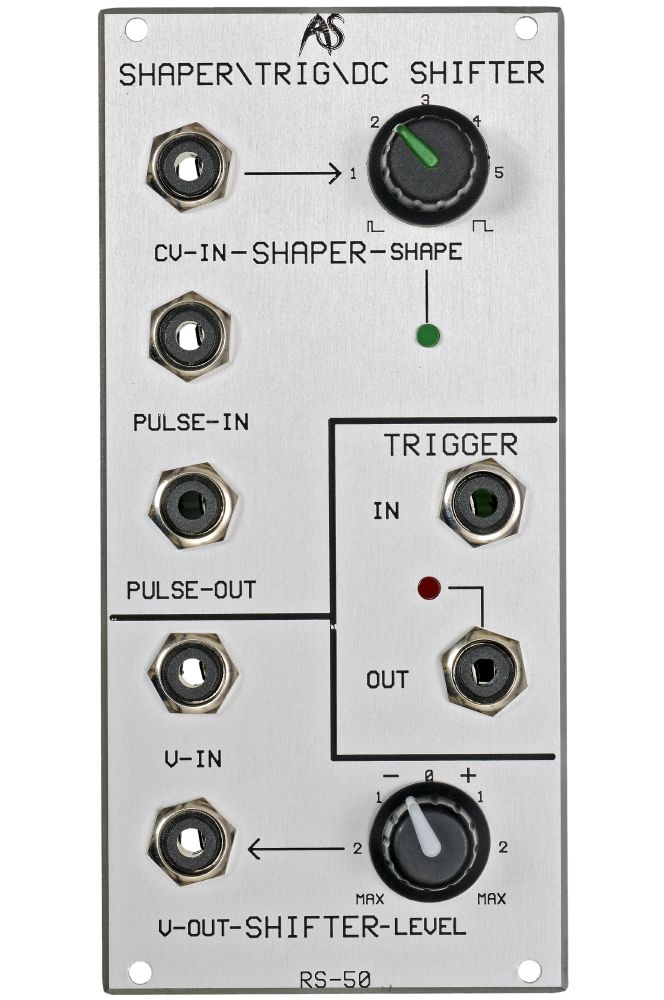Analogue Systems
Trigger generator with VC pulse shaper & VC DC level shifter.
Some analogue synthesisers generate pitch CVs and Gates, but not dedicated trigger signals. This can be frustrating when you use them to control modular synthesisers which can retrigger envelope generators and other modules during a sustained gate. What you need in these situations is a device that derives trigger signals from the signals provided. On other occasions you may wish to step beyond the limitations imposed by conventional trigger generators such as keyboards, arpeggiators, and LFOs. You may, for example, like to trigger a synthesised sound in time with a drum beat. You may even wish to add a correctly timed filter response to the sound generated by the drums themselves. In each case, the Integrator needs to "know" when to trigger the envelope generators controlling the VCAs and VCFs in the patch. The TRIGGER generator is the means by which you accomplish all these actions.
For example, you can use it to detect changes in pitch CV in order to fire off trigger pulses in time with your playing. Alternatively, you can use it to detect changes in an external signal's amplitude and generate trigger pulses when these occur.
Shaper
Sometimes you may wish to take a short pulse and generate a more extended signal from it. For example, you may have a trigger (which is a pulse with virtually no duration) and want to create a gate signal from it. One occasion for this will be when you have derived a trigger using the RS-50 Trigger described above. If you take the output from the Trigger to a multiple, and bring one output back to the Shaper, you can generate both gate and trigger simultaneously. Used together with an RS-30 Frequency-to-Voltage converter, you can derive the full set of pitch CV, Trigger and Gate from a single audio signal. This is not the only use for the Shaper, and different effects are obtained when you present audio frequency signals to its input. If the 'Shape' is at its minimum, low-ish frequencies will be re-transmitted as pulse waves. But if the duration of the Shape is longer, cycles of the incoming signal will be missed and, depending upon the nature of the original signal and the settings of the RS50, you can obtain many 'sync', pitch-shifting, and poly-rhythmic effects
Shifter
If a signal is not fluctuating between two levels it is called a DC voltage and, while you may think that this signal is less useful than the AC voltages generated by oscillators and LFOs, you would be wrong. For example, the knobs that allow you to tune a VCO or set the initial cutoff frequency of a VCF are sources of DC voltages that modify the action of the oscillator or filter (or whatever). It is often useful, therefore, to have an independent source of DC voltages that you can use to affect other modules. The RS-50 "Shifter" is such a source.

